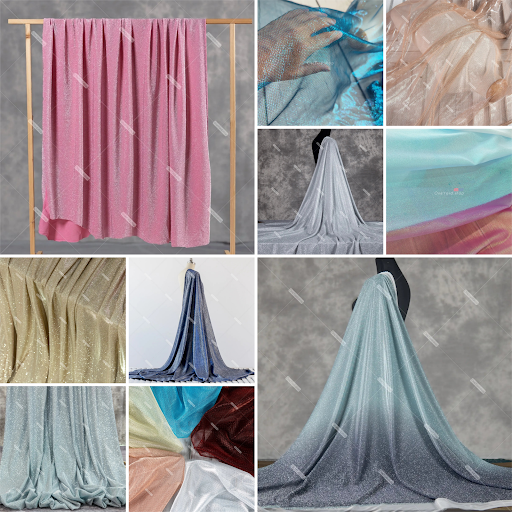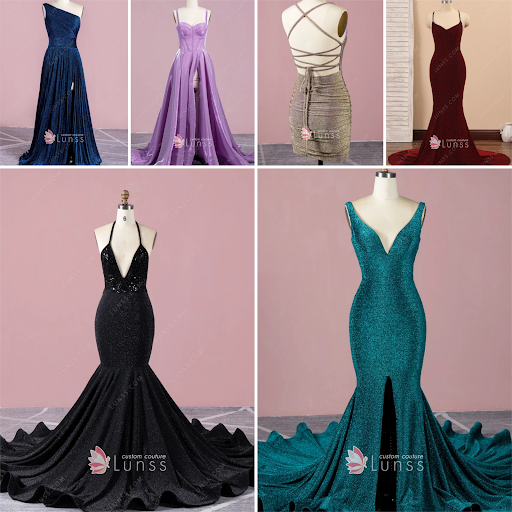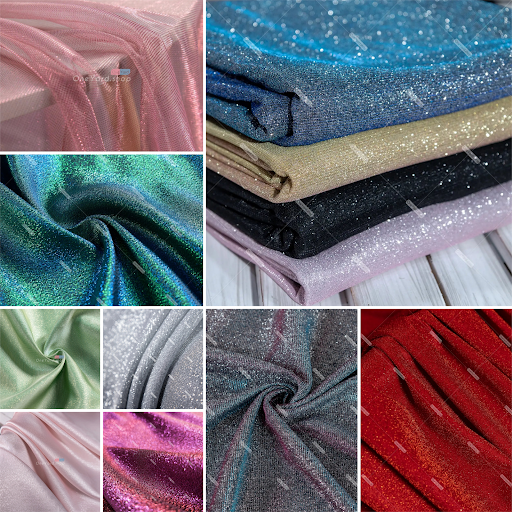Lurex, the shining sensation of the ’80s, has made a comeback, captivating fashion enthusiasts in every season and for all occasions. But what is lurex fabric, and what makes it so special? In this article, we will explore everything you need to know about lurex fabric.
What is the history of lurex fabric?
Lurex fabric has a rich history that can be traced back to the mid-20th century. Lurex fabric was first introduced in the 1940s by the Lurex Company in the United States. The name “Lurex” is actually a portmanteau of “lustrous” and “tex,” which aptly describes its shiny and vibrant appearance. It was originally created as a replacement for traditional metallic threads used in embroidery, offering a more cost-effective and versatile alternative. The 1950s and 1960s saw lurex incorporated into various fashion pieces, ranging from cocktail dresses to accessories like scarves and gloves.
What is lurex fabric and what are its uses?
The lurex fabric we are familiar with has evolved significantly since its inception, becoming even more exquisite, comfortable, and technologically advanced. It is a knitted fabric with excellent elasticity and flexibility, crafted using metallic fibers like aluminum, which are then wrapped and sealed with polyester or polyamide. With its sophisticated sheen, lurex fabric is often used in garments such as dresses, skirts, and tops, as well as in accessories like scarves, shawls, and hats. It is also a popular choice for festive decor and costumes, as it adds a touch of sparkle and shine to any project.

What are the characteristics of the lurex fabric?
Lurex fabric is known for its distinctive characteristics that set it apart from other textiles. These characteristics include:
Shimmer and Shine: The most prominent feature of the lurex fabric is its dazzling, metallic-like shimmer and shine. This sparkling effect is achieved through the use of metallic threads, often made of aluminum, copper, or polyester with a metallic finish. The light-catching properties of lurex make it a go-to choice for adding glamour to clothing and accessories.
Versatility: Lurex can be incorporated into various types of fabrics, including woven and knitted materials. This versatility allows it to be used in a wide range of clothing items, from lightweight sheer garments to heavier knitwear, making it suitable for both casual and formal occasions.
Comfort: While lurex threads have a metallic appearance, they are typically blended with other fibers like cotton, silk, or synthetic materials. This blending ensures that lurex fabrics maintain comfort and wearability, even against the skin. It prevents them from feeling scratchy or uncomfortable, as pure metallic threads might.
Durability: Lurex fabrics are known for their durability and resistance to tarnishing. The metallic threads are designed to withstand wear and tear, ensuring that the shimmer and shine remain intact over time. This makes lurex a practical choice for garments that are meant to be used repeatedly.
Color Variety: Lurex is available in a wide range of colors and patterns, giving designers and consumers a plethora of options to choose from. Whether you prefer classic gold and silver or bold, vibrant shades, lurex fabrics can cater to a variety of style preferences.
Texture: Depending on the blend of fibers and the weaving or knitting technique used, lurex fabrics can have different textures. They can range from smooth and soft to textured and tactile, offering additional depth and dimension to the material.
Resilience: Lurex fabrics tend to hold their shape well and resist wrinkling, making them suitable for garments that need to maintain their form and appearance.
Can Lurex fabric be used for home decor?
Yes, lurex fabric can be used for home decor, such as for curtains, Wall Hangings, tablecloths, and pillow covers. Its shimmering qualities make it a unique and eye-catching choice for various home furnishings and decor items. However, it is important to choose a high-quality lurex fabric that will hold up to regular use and cleaning.
How to incorporate lurex fabric into your special occasion dresses?
- Use lurex as an Accent
Consider using lurex as an accent or embellishment on the dress rather than as the main fabric. For example, you can add lurex trim to the neckline, sleeves, or hemline to create a subtle yet eye-catching detail.
- Combine lurex with Sheer Fabrics
Pair lurex with sheer fabrics like chiffon, tulle, or organza to create elegant overlays, sleeves, or embellished details. The combination of sheer and shimmer can be particularly enchanting.
- Create a lurex Belt or Sash
Design a metallic belt or sash made entirely of lurex fabric to cinch the waist and add definition to the dress. This not only highlights the wearer’s figure but also introduces a touch of opulence.
- Design a Metallic Bodice
Consider using lurex fabric for the bodice of the dress. This is especially effective for strapless or sleeveless styles, as it draws attention to the upper body and adds a glamorous focal point.
- Play with Color
Lurex fabrics are available in various colors, not just traditional gold and silver. Experiment with colored lurex to add a unique twist to your special occasion dresses.
- Consider Different Dress Styles
Lurex can work well in various dress styles, from elegant ballgowns to sleek sheath dresses. Choose a style that complements the occasion and the wearer’s preferences.
When incorporating lurex fabric into special occasion dresses, it’s essential to strike a balance between the fabric’s inherent shimmer and the overall design of the dress. Whether you choose to use lurex sparingly as an accent or make it a central element of the gown, the key is to create a dress that exudes elegance and makes the wearer feel truly special on their memorable occasion.
















